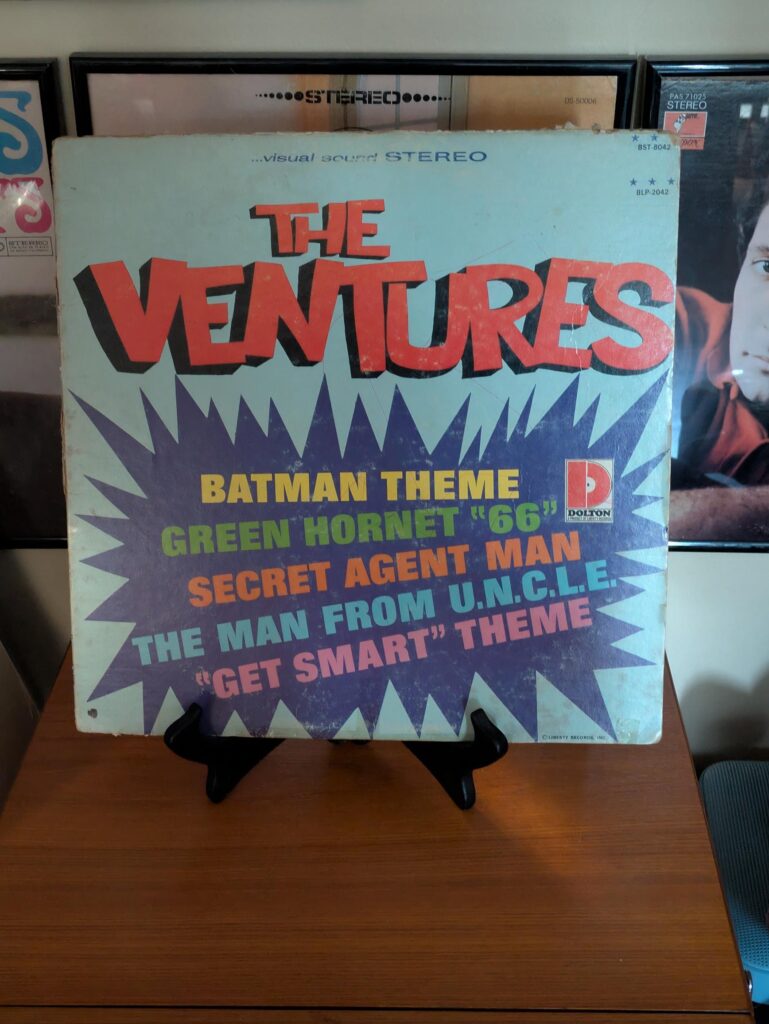
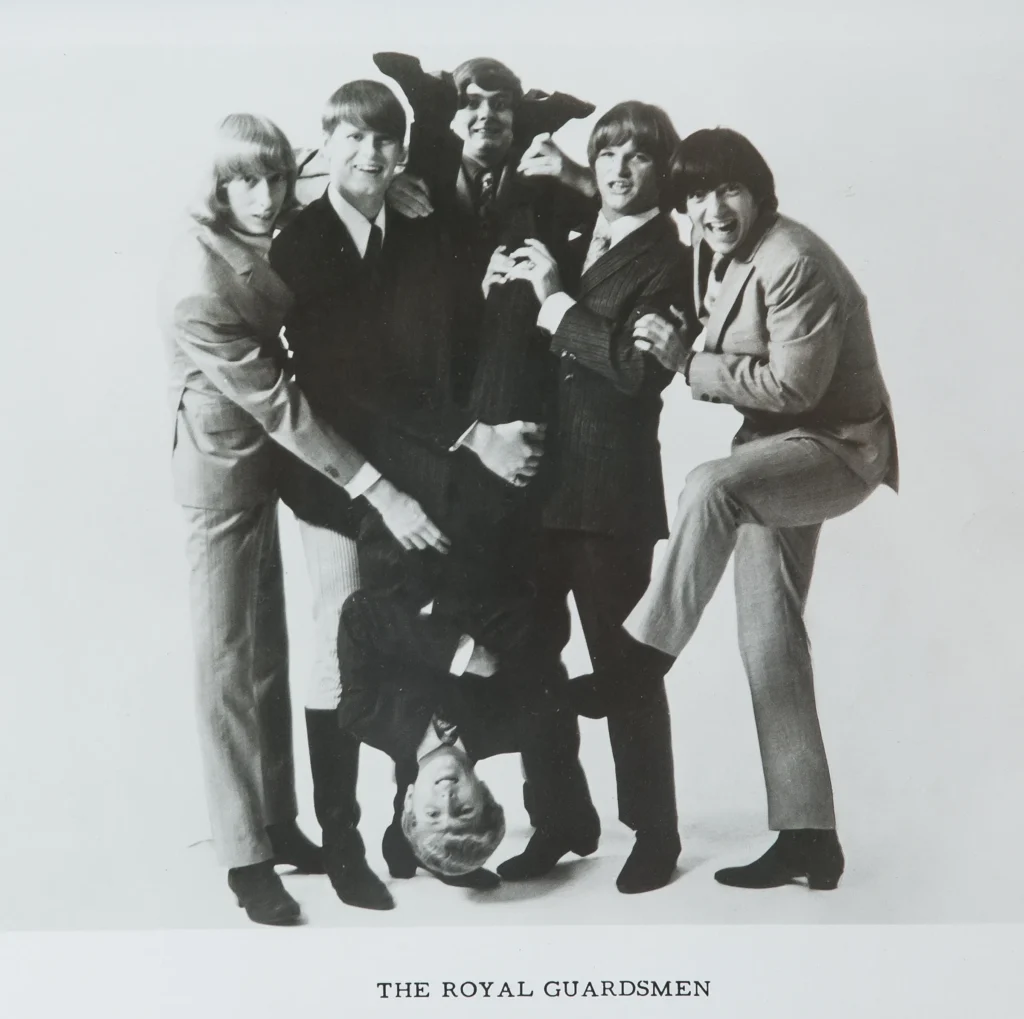
Charlie Brown, Snoopy and the characters from Charles Schulz’s beloved comic strip “Peanuts” have had a long tradition in music. From jazz composer Vince Guaraldi’s original soundtracks to the TV specials, including his composition “Linus and Lucy” which is recognized worldwide as the official “Peanuts” theme, to two hit Broadway musicals, to a beautiful and insightful ballad by Serge Gainsborough, and most recently a series of thoughtful compositions by Ben Folds, Charlie Brown and his friends have been interpreted in song multiple times throughout the decades, proving the endurance of this endearing comic franchise. But for Florida based rock group The Royal Guardsmen, their symbiotic relationship with Snoopy was both a blessing and a curse. Via their 1966 novelty hit “Snoopy Versus The Red Baron,” as well as its musical sequels, Snoopy helped secure The Royal Guardsmen place within the 1960’s musical soundscape, but despite how hard they tried, they would never be able to pull themselves out of the cartoon beagle’s massive shadow.
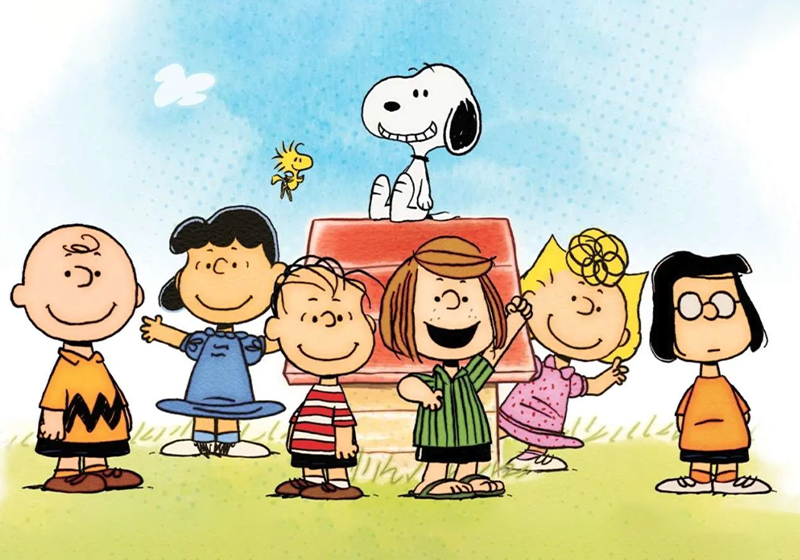
“Peanuts” has been a part of my life for so long that it precedes my ability to even form memory, and Charlie Brown and Snoopy have been characters that I have always been aware of and loved. I’d guess that my earliest exposure to them was via the seasonal holiday specials, which have been required watching for my entire life. But even before I could read, I acquired a love for newspaper comic strips, and “Peanuts” always seemed to be on the front page of the Sunday funnies section. So, as long as I can remember, I’ve cultivated a love for the world of “Peanuts,” and as I got older, and began to really look at Charles Schulz’s work with adult eyes, my fondness for the franchise with all its eccentricities and sophistication, has only grown. In fact, if you wander through our home today, you will find something with Charlie Brown or Snoopy in every single room of the house.
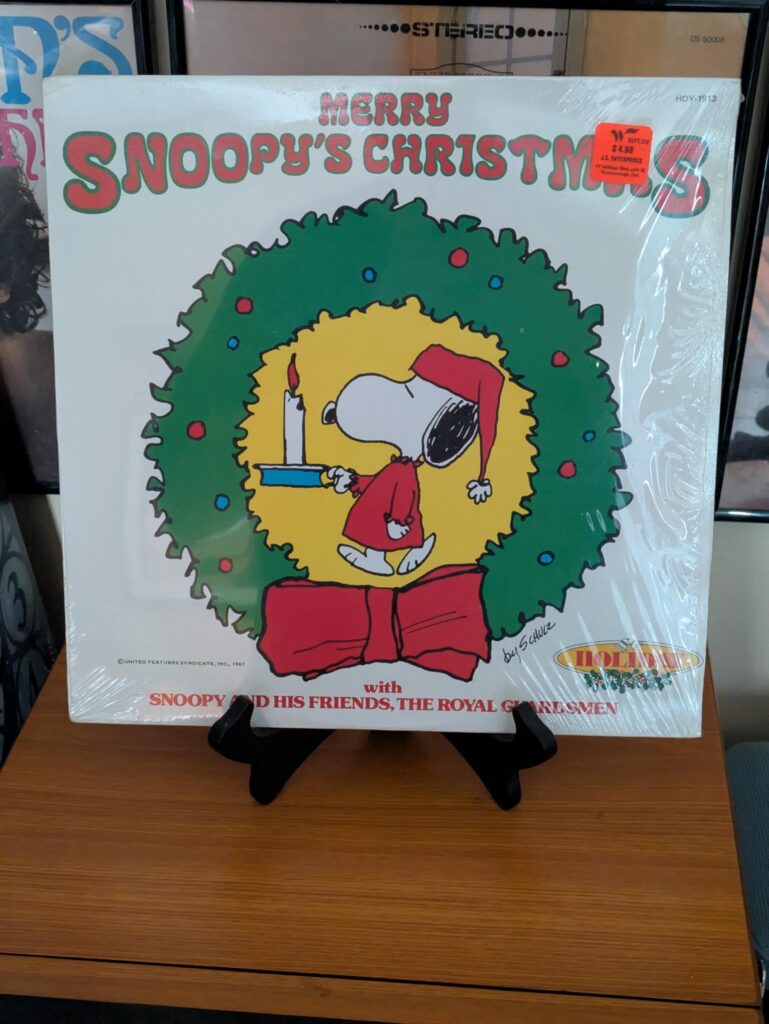
But in regard to the music of The Royal Guardsmen, I became aware of their Snoopy songs via Christmastime radio when I was still a young boy. When I was growing up, my family would spend Christmas at my grandparents’ farmhouse in Northern Ontario, and the travel time would be about ten hours, often split into two days. On those trips, during an era without laptops, cell phones or digital media, we depended on the radio to keep us entertained. At Christmastime, this meant hours of holiday programming, and you could be sure at some point that The Royal Guardsmen’s 1967 hit “Snoopy’s Christmas,” telling the story of Snoopy and The Red Baron’s meeting during the historical 1914 Christmas truce, would be played at least once. Well, when “Snoopy’s Christmas” came on the radio it was a moment of great excitement for my brother and I, and a nice break from all the traditional Christmas carols that were being played. I didn’t know the history or the meaning of the song, and I didn’t know the name of the band, but I knew Snoopy, and I knew he fought The Red Baron, and I loved that there was a Christmas song about it. I don’t know how old I was when I first heard it, but it was enough of a cultural touchstone that I could connect to it. But, of course, we only heard “Snoopy’s Christmas” once a year, and only at the mercy of a radio station playing it. It wasn’t until around 1983 that I was at a Woolco store with my mother, and I found a copy of “Merry Snoopy’s Christmas” in a discount record bin. Released on the Holiday Records label in 1980, “Merry Snoopy’s Christmas” was a cheaply produced rerelease of The Royal Guardsmen’s third album, “Snoopy and his Friends The Royal Guardsmen.” I clearly remember begging my mother to buy me the record, believing this would be the only chance I’d ever have to be able to have the ability to play “Snoopy’s Christmas” any time I’d want, but in my mind’s eye I recall she was reluctant at first. However, I must have made my pleading completely inconsolable, or perhaps convincing enough, because the record did come home with us. It was obviously money well spent by my mother because I still own that album in my collection today!

The origin of “Snoopy vs. The Red Baron” has a long and somewhat convoluted story which actually predates Snoopy’s first battle with The Reed Baron by about three years, and.did not originate with Charles Schulz, nor The Royal Guardsmen. The song was the brainchild of musician Dick Holler, who during the late 1950’s headed a Baton Rouge, Louisiana rock outfit called The Rockers. A prominent group within Louisiana during the early days of rock n’ roll, some of the names to come out of Dick Holler and The Rockers included Dr. John and Johnny Rivers. The primary songwriter for the group, Hollar was inspired by Johnny Horton’s successful war inspired story songs “The Ballad of New Orleans” and “Sink the Bismark,” and wrote his own historical based battle song about the exploits of Germany’s legendary pilot Manfred von Richthofen, who terrorized the skies during World War I as The Red Baron. Possibly the most famous pilot in military history, The Red Baron was believed to have killed 80 airmen before being shot down himself in 1918. A mythical figure in military lore, Hollar came up with a memorable hook for the song:
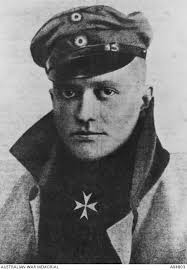
“Ten, twenty, thirty, forty, fifty or more
The Bloody Red Baron was rollin’ up the score
Eighty men died tryin’ to end that spree
Of the Bloody Red Baron of Germany,”
In 1962 Dick Hollar went into a small studio and recorded “The Red Baron” for producer Phil Gernhard, who had engineered the massively popular s “Stay” by Maurice Williams and the Zodiacs a few years earlier. However, a song celebrating the exploits of a German killing machine was just too much of a hard sell for the American public, and it made no impact on the record buying market falling quickly into obscurity.
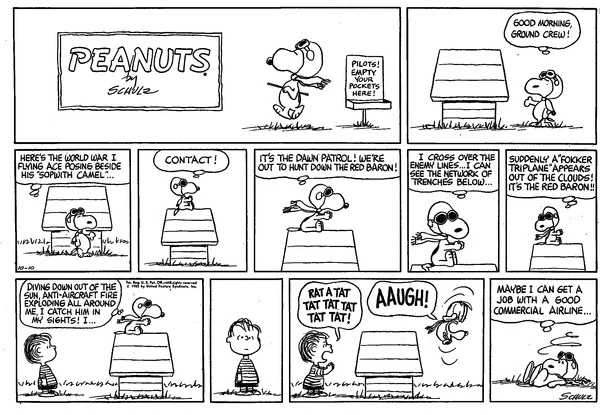
But a few years later The Red Baron would reenter pop culture in a far more whimsical way. On October 10, 1965, Charles Schulz published a Sunday “Peanuts” strip in which Snoopy climbed on top of his doghouse wearing an old flying helmet and scarf and “fought” The Red Baron for the first time. Having been published since 1950, the popularity of “Peanuts” had surged during the 1960’s and its characters became an extremely visible part of American culture. With much of the strip’s running gags and mythology being established by the mid-60’s, the strip’s canine character Snoopy, who often got lost in his flights of imagination, became especially popular with not only with kids, but also with college students and members of the counterculture. Snoopy’s battle with The Red Baron proved popular with the readers, and soon the sight of Snoopy sitting on his doghouse with his eyes hidden behind his goggles, and his teeth gritted in intense battle mode became one of the most iconic images from the comic.
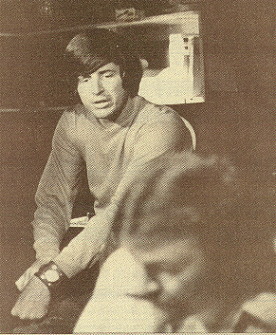
As Snoopy’s battles with The Red Baron reigned on in the comic pages, producer Phil Gernhard took notice and remembered that record that he did with Dick Hollar that flopped. Digging it out, he wrote out a few new verses about Snoopy showing up on the scene and engaging in a “dogfight” with The Baron, and although he did not defeat the German, he intimidates him enough to retreat. Now the song wasn’t about a killer, but about a heroic cartoon dog who saved the day, changing the tone of the song completely. Without letting Holler know about the rewrite, Gernhard retitled the song “Snoopy vs. The Red Baron,” and sought out a band to record it, which is how The Royal Guardsmen finally fall into the picture.
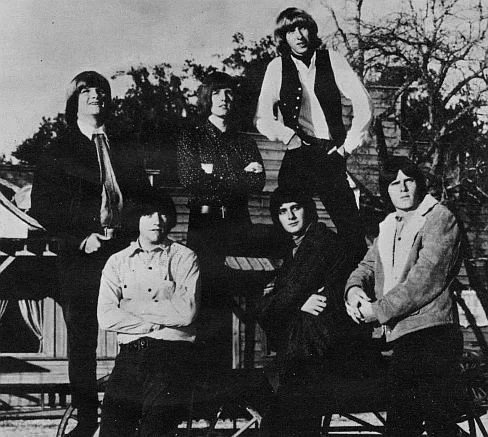
Formed in Ocala, Florida in 1965, The Royal Guardsmen started as a neighbourhood garage band made up of high school kids who performed Beatles and Rolling Stones hits. Consisting of Barry Winslow on guitar and lead vocals, Bill Balogh on bass, John Burdett on drums, Billy Taylor on organ, Tom Richards on rhythm guitar and Chris Nunley on additional vocals, the group initially called themselves The Posman, but when a cute girl asked John Burdett what their band was called at a gig, he was too embarrassed to tell her what he felt was a terrible name. Looking over at Vox amplifier that the band had just purchased, John saw the name “The Royal Guardsman” branded on it, and that’s what he told her they were called, and it ended up sticking.
Becoming one of the popular groups within the area’s music scene, The Royal Guardsmen worked primary at local teen clubs and school dances but eventually moved into Tampa where they became a popular supporting band for the more established groups. Eventually gaining the attention of Lauire Records, they recorded their first single, “Baby Lets Wait,” but it didn’t go very far. However, it was the beginning of their career spanning relationship with Lauire Records, be it for better or for worse.
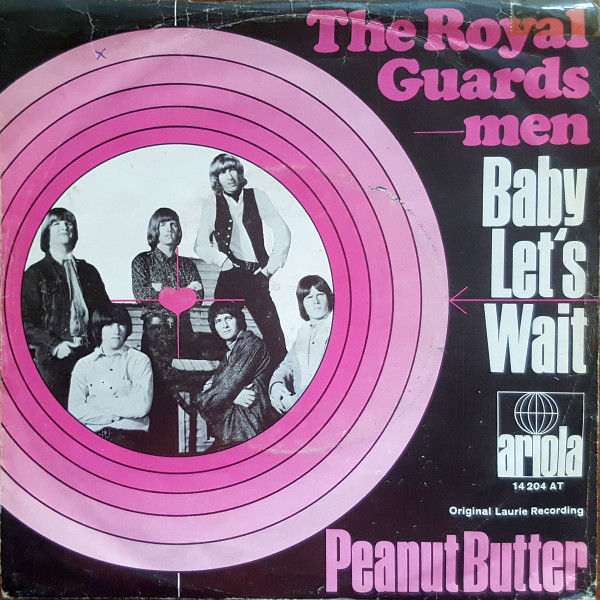
One afternoon The Royal Guardmen were setting up for a gig at a local dance hall when Phil Gernhard, who had relocated to Tampa, came in holding a pad of paper with the handwritten lyrics of “Snoopy vs. The Red Baron” on it. Introducing himself to the group, he told them that he’d been talking to local groups to record this song he had about Snoopy, and that he was willing to record a demo on his own dime and try selling it himself. The Guardsmen apparently weren’t completely turned on by the idea of recording a novelty song, but with “Baby Let’s Wait” going nowhere, they figured that it might be a good opportunity, so they agreed to take a stab at it. Gernhard gave them the lyrics, told them to write something with a marching band kind of feel to it, and agreeed to meet them at their rehearsal space in Ocala a week later.
In the week that followed the band barely thought about the song, but by Thursday they realized that Gernhard was going to be showing up in a few days time, so The Guardsmen pulled together and worked something up half last minute. Figuring that Germhard probably wouldn’t like their composition, they figured he’d just leave them alone so they could just go on doing their own thing. But when Gernhard showed up in their garage he was delighted with the group’s take on the song and a week later The Royal Guardmen were back in Tampa with Gernhard laying down a rough track of “Snoopy vs. the Red Baron.”
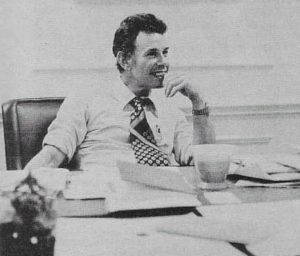
With The Royal Guardsmen having a previous relationship with Laurie Records, Gernhard went to the label with “Snoopy vs. the Red Baron,” and despite the fact that the first single didn’t even become a regional hit Laurie Record’s cofounder Gene Schwartz saw promise in the Snoopy song and brought the band in again to do an official rerecording of the song, now complete with sound effects of planes flying and machine guns rattling. He even brought Gernhard in for the recording to produce the single. This is when Gernhard finally put a call to Dick Holler, who, with The Rockets having long broken up, was now living in North Carolina selling sporting equipment and playing piano at night in a club. Gernhard let Holler know what he had done and that the single was about to go on the market, but promised if anything came of it, he’d share in the proceeds. Well, something came of it. The single was released in November 1966 and within five weeks it had sold over a million copies. On December 17th “Snoopy vs. the Red Baron” had climbed up the top of the Billboard charts, getting as high as the #2 position (the song that prevented it from getting to #1 was “I’m a Believer” by The Monkees, who were white hot in 1966) and had become Laurie Record’s biggest selling single of the year.
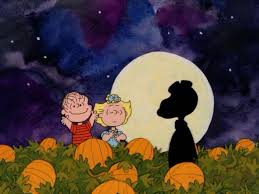
Now while nobody could have predicted it, a portion of the popularity of “Snoopy vs. The Red Baron” may have been as a result of the first airing of “It’s the Great Pumpkin, Charlie Brown” a few weeks prior to the release of the single. The long awaited follow up to the highly popular “A Charlie Brown Christmas,” the Halloween special aired on October 27, 1966, and was a ratings giant for CBS-TV. In the special, Snoopy was the center of the “B plot” in which his imaginary battle with The Red Baron was animated for the first time, tying tightly into the special’s dramatic conclusion in a memorable way. With the popularity of the special firmly securing Snoopy and the Red Baron into the public zeitgeist, it potentially fueled the popularity of the single making it a massive hit.

Thrilled with the success of the single, Schwartz rushed The Royal Guardsmen, along with Gernhard, into the studio to pump out a debut LP. Putting all the sides from their first two singles on the album, they also put together a collection of cover songs which were primarily novelty tunes, including one of the songs that initially inspired Hollar to write his original composition “The Ballad of New Orleans.” Incidentally, Snoopy wasn’t the only character from the comic page to appear on the album. The Royal Guardsmen also cut a cover of The Hollywood Argyles’ 1960 hit “Alley Oop,” about the fictional caveman created by cartoonist VT Hamlin. The debut LP, with a generic caricature of The Red Baron on the cover, landed in record stores in January 1969.
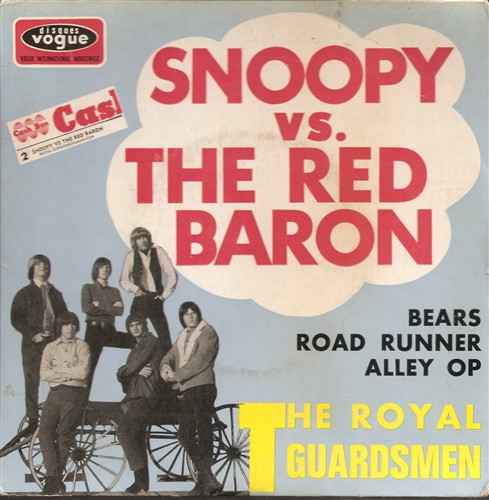
With most of The Royal Guardsmen still being high schoolers, Laurie Records had to wait for the Christmas break before they could send them out to tour, but the moment the holidays came the band was immediately sent out to California for dates as openers for The Beach Boys and The Jefferson Airplane. Apparently, audiences were surprised by the group when, instead of getting a dorky bunch of squares singing about Snoopy as was expected, The Royal Guardsmen were instead playing Jimi Hendrix covers. So, as the New Year rang into 1967, things were good for everyone involved – The Royal Guardmen, Gernhard and Hollar, who had now established themselves officially as a song writing team, and especially Gene Schwartz and Laurie Records.
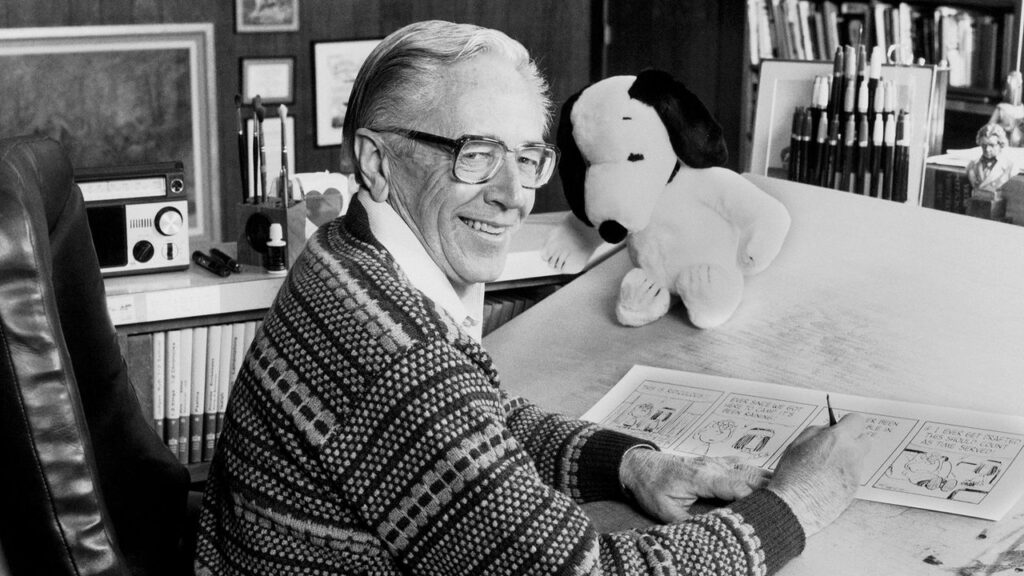
But there was one person who wasn’t so amused about the success of” Snoopy vs. the Red Baron.” Although a copy of the song along with a letter was apparently sent to Charles Schulz by Phil Gernhard on behalf of Laurie Records, when nobody heard back from the cartoonist, they just went ahead and recorded and released the song anyways without actually getting permission to use Snoopy. Now that the song was a hit on the radio, they had finally gotten Charles Schulz’s attention, as well as his lawyer’s, While Charles Schulz has been known to be a very nice and mild mannered fellow, he was also a brilliant business man who kept an iron clad grip on his characters and was meticulous in marketing and profiting from his creations. As the record hit its peak popularity, Laurie Records received a letter from Schutz’s legal team suing for copywrite infringement. Laurie Records immediately went into talks to settle things with Schulz, but in the meantime a peculiar alternative version of “Snoopy vs. the Red Baron” was released.
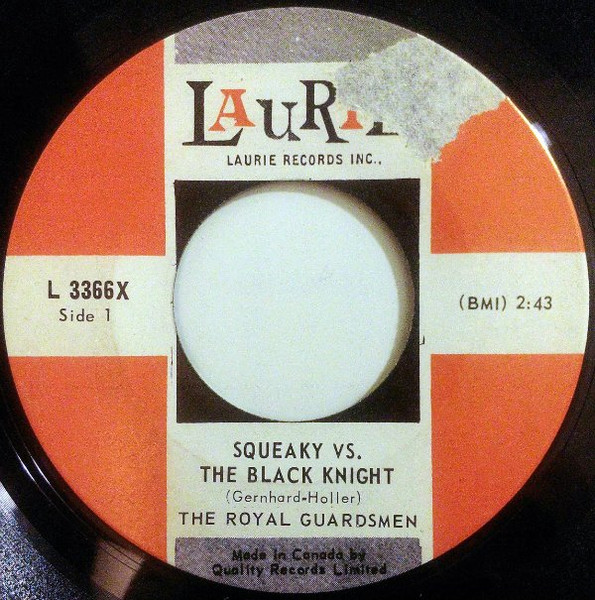
In case that an agreement could not be reached with Schulz, Gernhard wrote an alternative version of the song called “Squeaky vs. The Black Knight.” The exact same song with a few of the names changed, The Black Knight was now a fictional German pilot, and Squeaky was described in the lyrics as “a buck toothed beagle with a gleam in his eye.” Gernhard also had to change the reference to The Great Pumpkin to “So he asked The Great Leader for a new battle plan.” Now, they probably didn’t need to change the name of The Red Baron to The Black Knight, since he was a historical figure and not under the regulations of any copywrite laws. But I assume that they probably changed it out of consideration to Schulz as to not agitate the situation any more than it had been already. A small run of “Squeaky vs. the Black Knight” records were released in Canada, but thankfully an agreement was reached by Laurie Records and Charles Schulz, and Squeaky was sent away, never to be heard from again. Although full details on the settlement were not released publicly, Schultz was paid for royalties owing, and a deal was made between him and Laurie Records in regard to potential follow up Snoopy songs…and follow ups were to come.
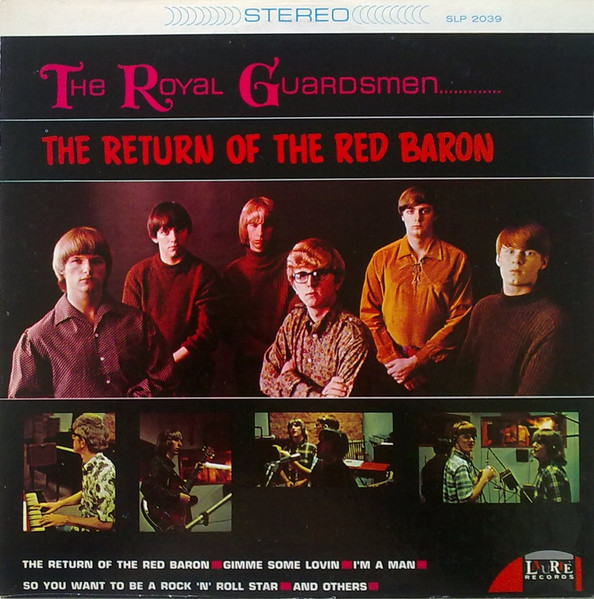
With The Royal Guardsmen hot in the public’s mind, Laurie Records rereleased “Baby Lets Wait” nationally, hoping that with the success of “Snoopy vs. The Red Baron” that maybe it’d hit this time. However, when it failed again, Gene Schwartz began to wonder if perhaps the appeal of “Snoopy vs. The Red Baron” wasn’t because of The Royal Guardsmen, but that it was the popularity of Snoopy which catapulted it to the top. Thus, for the group’s third single, Schwartz was banking on Snoopy again and had Gernhard and Hollar pen a follow up. Much to the displeasure of The Royal Guardsmen, who wanted to be taken seriously as a rock n’ roll outfit, they were brought back into the studio to record “The Return of The Red Baron.” Another LP was released simultaneously with the single, which was again primarily full of covers, for the exception of another new single called “The Airplane Song (My Airplane).” A truly awful bubble-gum number that was purely kid’s stuff, the song kept on the aviation theme, pushing them into novelty group territory once again. Incidentally, the album was to include a cover of The Coaster’s 1965 hit “Charie Brown,” but Charles Schulz, who now had creative input into the album, insisted that the song not be recorded as the Charlie Brown in that song was not the same as his character but, instead, a hip talking trouble maker with the same name.
Released quickly on the heels of the first album, “The Return of The Red Baron” was primarily an inferior rewrite of “Snoopy vs. The Red Baron, “but the Snoopy hungry public bought it anyway, and it managed to get to the #15 spot on the Billboard charts. Following the success of “Return of The Red Baron,” two more non-Snoopy singles were released; the above mentioned “The Airplane Song (My Airplane),” which only flew as high as the #46 spot on Billboard charts, and “Any Wednesday,” which got off the ground, getting only as high as #97 on Billboard.
Although The Royal Guardsmen had proven the ability to get on the charts on their own, albeit in the lower half of it, by this point Gene Schwartz was convinced that the formula to their success hinged on their relationship with Snoopy, and it was decided that when dealing with The Royal Guardsmen, they were going to double down on the cartoon dog for the foreseeable future. However, The Royal Guardsmen themselves were not involved in that decision.
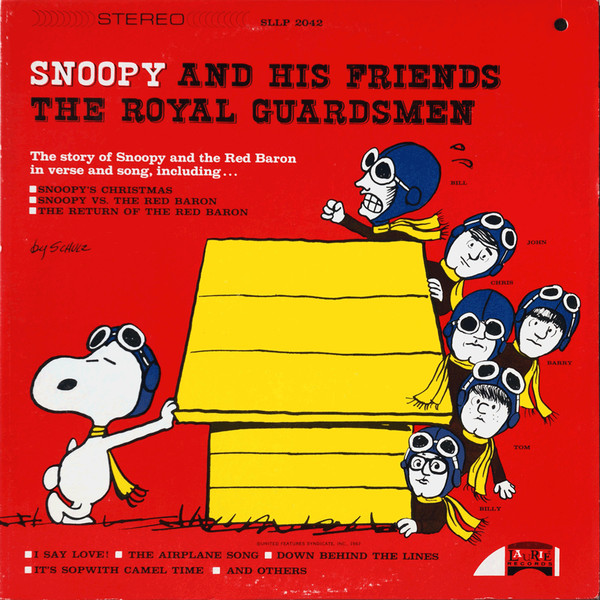
For the third album Laurie Records titled the record “Snoopy and his Friends The Royal Guardsmen,” giving Snoopy head billing on the album cover, and the entire first side was rereleases of the first two Snoopy songs, followed by the debut of the Christmas single, “Snoopy’s Christmas.” The second side would include a rerelease of “The Airplane Song,” along with other original songs that paid tribute to the Snoopy/Red Baron storyline such as “Sopwith Camel Time” and “Down Behind the Lines.” The album even got original cover artwork by Charles Schulz for the first time, featuring both Snoopy as well as caricatures of The Royal Guardsmen themselves! Despite it being not only rushed, but also forced on The Royal Guardsmen, “Snoopy and his Friends the Royal Guardsmen” turned out to be a surprise success, selling well in North America. Meanwhile, while “Snoopy’s Christmas” failed to chart in the US, it went all the way to the #1 spot in New Zealand and Australia, becoming a massive hit “down under.” The single also charted in Canada, where it got to the #30 position and, for some stations, is still a part of the holiday playlist today.
In order to appease them in regard to doing another Snoopy heavy project, Schwartz promised The Royal Guardsmen that their next single could be an original that the band wrote themselves, leading to the release of Barry Winslow and Bill Taylor’s “I Say Love.” However, Laurie Records was, again, disappointed when the single didn’t chart any higher than #72 in February 1968.
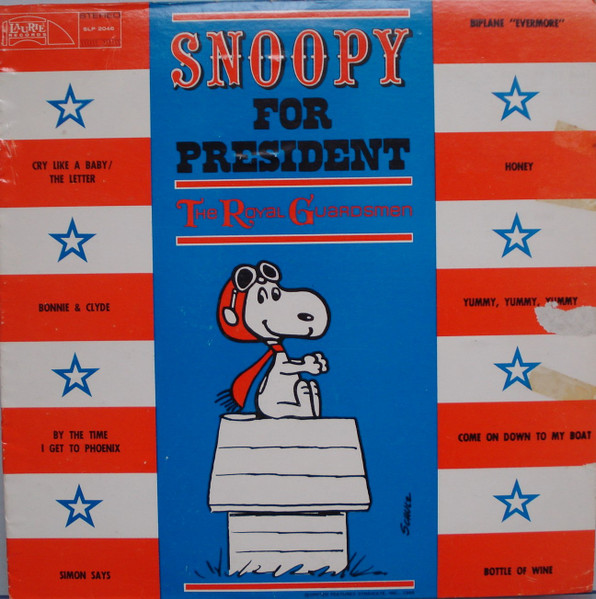
As The Royal Guardsmen disenchanted with the Snoopy connection continued to grow, the band was still proving themselves to be a popular touring group, sharing the stage with 60’s mainstays such as The Monkees, Paul Revere and the Raiders, The Turtles, Sam the Sham and the Pharaohs, Tommy James and the Shondells and even The Who. Meanwhile, a strange phenomenon began to take hold organically amongst Snoopy fans. With America going into an election year, grassroots “Snoopy for President” campaigns started to pop up at college campuses with posters, t-shirts and buttons saying “Vote for Snoopy” being passed out. Not at all endorsed by Schulz, who primarily kept politics out of his comic strip, Schwartz noticed what was happening and decided Snoopy needed a campaign song and enlisted Hollar and Gernhard to write it. With The Royal Guardsmen out on tour, Schwartz requested that just Barry Winslow be flown back to record the vocals for the new song, “Snoopy for President.” Barry came to the studio to find backing tracks of an entire album worth of material already recorded via studio musicians, including the new single alongside a bunch of covers. Barry pumped it out quickly and got back to the tour. With another cover drawn by Charles Schulz, the album was dropped in the spring of 1968, but little did The Royal Guardmen realize “Snoopy for President” would be their final full album with Lauire Records.
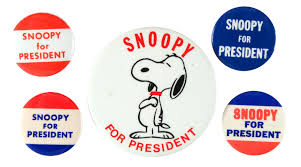
But soon after the release of “Snoopy for President,” real world events got really dark really fast when candidate Robert Kennedy was assassinated that June. The change of tone for the election tanked the whimsy of the song, and “Snoopy for President” only made it to #85 on Billboard making it the worst selling Snoopy song yet. Ironically, Snoopy did pretty well in the actual election as a write in candidate, nearly winning in California. As a result, new rules were created in the electoral process to make write in votes of fictional characters prohibited.
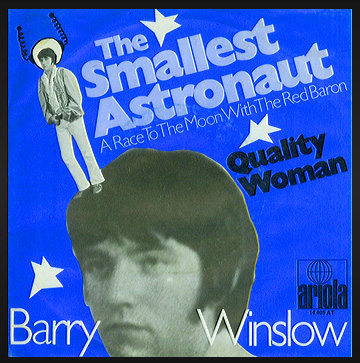
Yet there were more world events happening in America, and Schwarz felt that there were more Snoopy songs to be made. In the throes of the space race, America was about to put a man on the moon, and Laurie Record wanted to send Snoopy into space! By this time, The Royal Guardsmen were getting flat out resentful towards the gimmick and let everyone involved know that they wanted to part ways with Snoopy. But they weren’t the only ones who felt that the time was over for the Snoopy songs. Dissatisfied with “Snoopy for President,” Charles Schulz sent notice that he was ending his relationship with Laurie Records, and that they could no longer use his characters in their songs. But that didn’t deter Gene Schwartz from his idea. He called up Dick Hollar and had him write up a song anyways which depicted a dog going to space, and The Red Baron, still alive and now working for the Russians, to try to stop America from getting to the moon first. The only stipulation was that they wouldn’t ever use the name “Snoopy” in the song. The song Hollar wrote was titled “The Smallest Astronaut,” and although it has gone forgotten, it actually was one of the best of the songs written in the Snoopy series. Again, Schwartz only requested Barry to come in to record vocals to a prerecorded track performed by studio musicians. This time, with the band not actually being on the single, they did not want to be associated with the record either so “The Smallest Astronaut” was released as under Barry Winslow as a solo artist. Although “The Smallest Astronaut” was ironically one of the better songs in the Snoopy series, without Snoopy’s name actually being used in the title, and with Barry Winslow’s name not being instantly recognizable to the record buying public, the record tanked miserably,
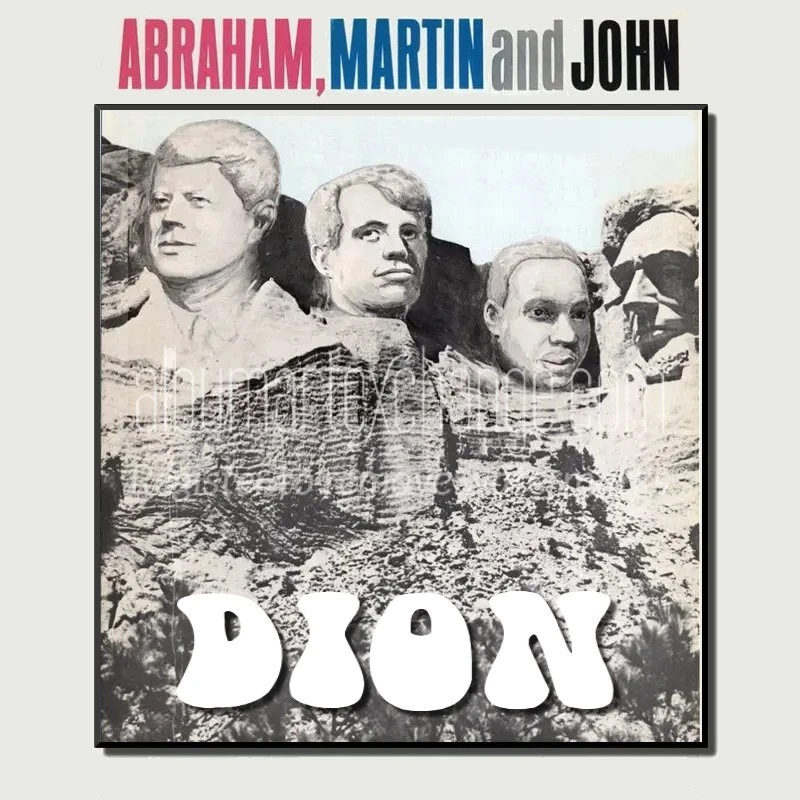
But the final straw that broke the camel’s back wasn’t over Snoopy at all. During the recording of “The Smallest Astronaut,” Hollar showed Barry a song he was working on about the recent assassinations and social turmoil in America. Very different than anything he had done with The Royal Guardsmen, it was a moving piece of music of great social and political relevance and would go on to be one of the era’s all-time classics – “Abraham, Martin and John.” Barry saw the power in the song and believed that it would be the one that would finally separate The Royal Guardsmen from Snoopy forever. When Barry departed Laurie Records to rejoin the band on the road, he left believing The Royal Guardsmen were going to be recording “Abraham, Martin and John.” However, when it was time to release it, Gene Schwartz didn’t want to give it to “the Snoopy band,” and instead gave the single to Dion DiMucci, who had been recording with Laurie Records since the label’s incarnation in the late 50’s. “Abraham, Martin and John” went to #4 on Billboard, giving Dion his first hit since 1964, but The Royal Guardsmen felt betrayed by Hollar and Schwartz. Hollar tried to repair the schisma by giving The Royal Guardsmen a more socially relevant song about teenage runways called “Mother, Where’s Your Daughter.” Yet, despite the fact that “Mother, Where’s Your Daughter” was potentially the best single they had ever recorded, the song didn’t land on Billboard at all. The damage proved to be permanent and shortly thereafter The Royal Guardsmen ended their relationship with Laurie Records. The Royal Guardsmen scuttled on for about another year as a touring group, but by the end of 1970 they called it quits.
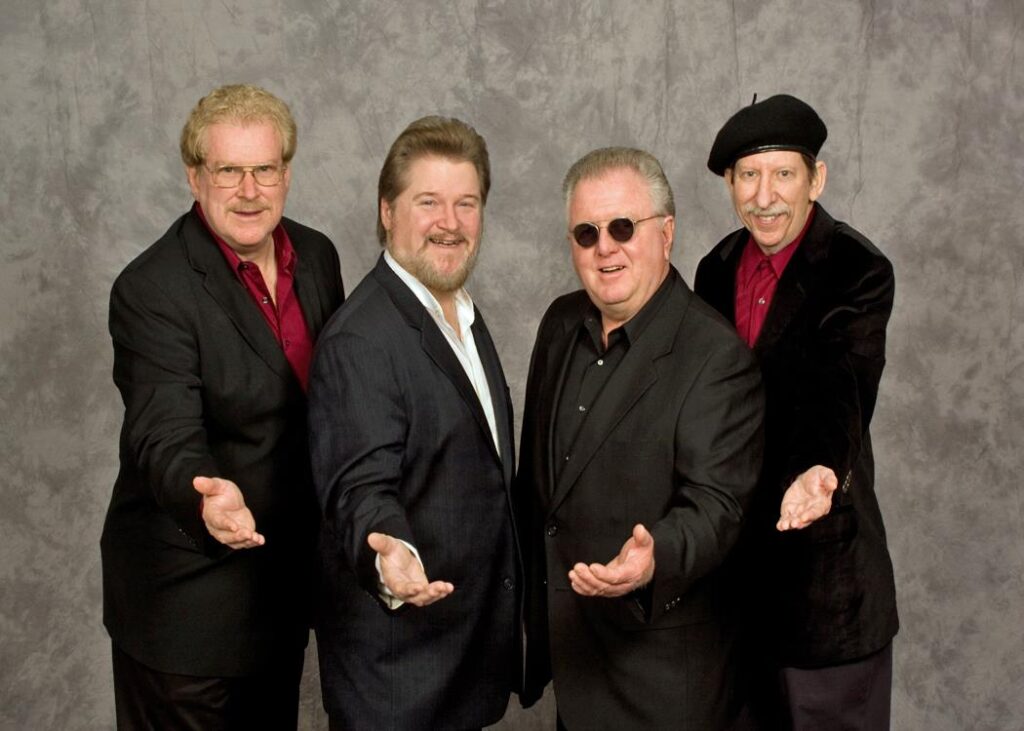
But within a few years members of The Royal Guardsmen would come together again, and in the decades since the group would reunite from time to time, becoming a popular group on the retro rock circuit where they eventually reembraced their Snoopy legacy as part of their act. In fact, one final Snoopy song would be entered into their repertoire in 2006 when Barry Winslow and John Burdette wrote a patriotic monstrosity titled “Snoopy vs. Osama,” which was released directly to streaming platforms. A terrible idea. The Royal Guardsmen brought Snoopy back to post 9-11 America in the most inappropriate way. Although the song may have sounded like it might be a parody, it was actually sung earnestly with inane lyrics:
“Osama Bin Laden won’t be running away
Snoopy finally found him and this was the day
He took him out (he took him out)
And now the world can sing
Goodbye Bin Laden and the end of your terrorist reign.”
Yikes. Best never listened to and forever forgotten, Charles Schulz had passed away six yeas prior to the release of this one and, thankfully, never heard it. Although his estate continues to still be very careful with the Peanuts license and cultural legacy, “Snoopy vs. Osama” seemed to make so little of an impact on the public that Schultz’s family didn’t even bother to take legal action on this one.
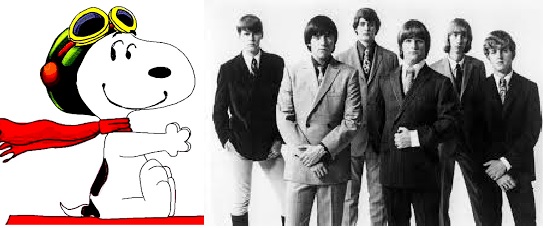
While the Snoopy gimmick probably hindered their continuing success, there is no denying that it also sealed The Royal Guardsmen on the rock n’ roll landscape forever. Although The Royal Guardsmen did release some fine non-Snoopy songs (“Any Wednesday,” “I Say Love” and “Mother, Where’s Your Daughter” are all forgotten gems) the bottom line is that the reason we know The Royal Guardsmen today, was completely because of the popularity of Snoopy. Perhaps Gene Schwartz was short sighted in regards to promoting The Royal Guardsmen past Snoopy to their full potential, but in the end, as Laurie Record’s head of A&R, he could see the difference a record with Snoopy’s name in the title had compared to one t that did not, and The Royal Guardsmen’s Snoopy songs became hugely popular with the audience, and sold millions for Laurie Records.. As a result, Snoopy became both The Royal Guardsmen’s biggest ally and greatest foe. But, the result was a charming series of novelty songs that have remained favorites to both 60’s pop music fans and “Peanuts” aficionados alike. The Royal Guardsmen will forever be associated with Snoopy for chronicling his legendary wartime battles in song, and in return Snoopy will keep The Royal Guardsmen in music fan’s record collections.

